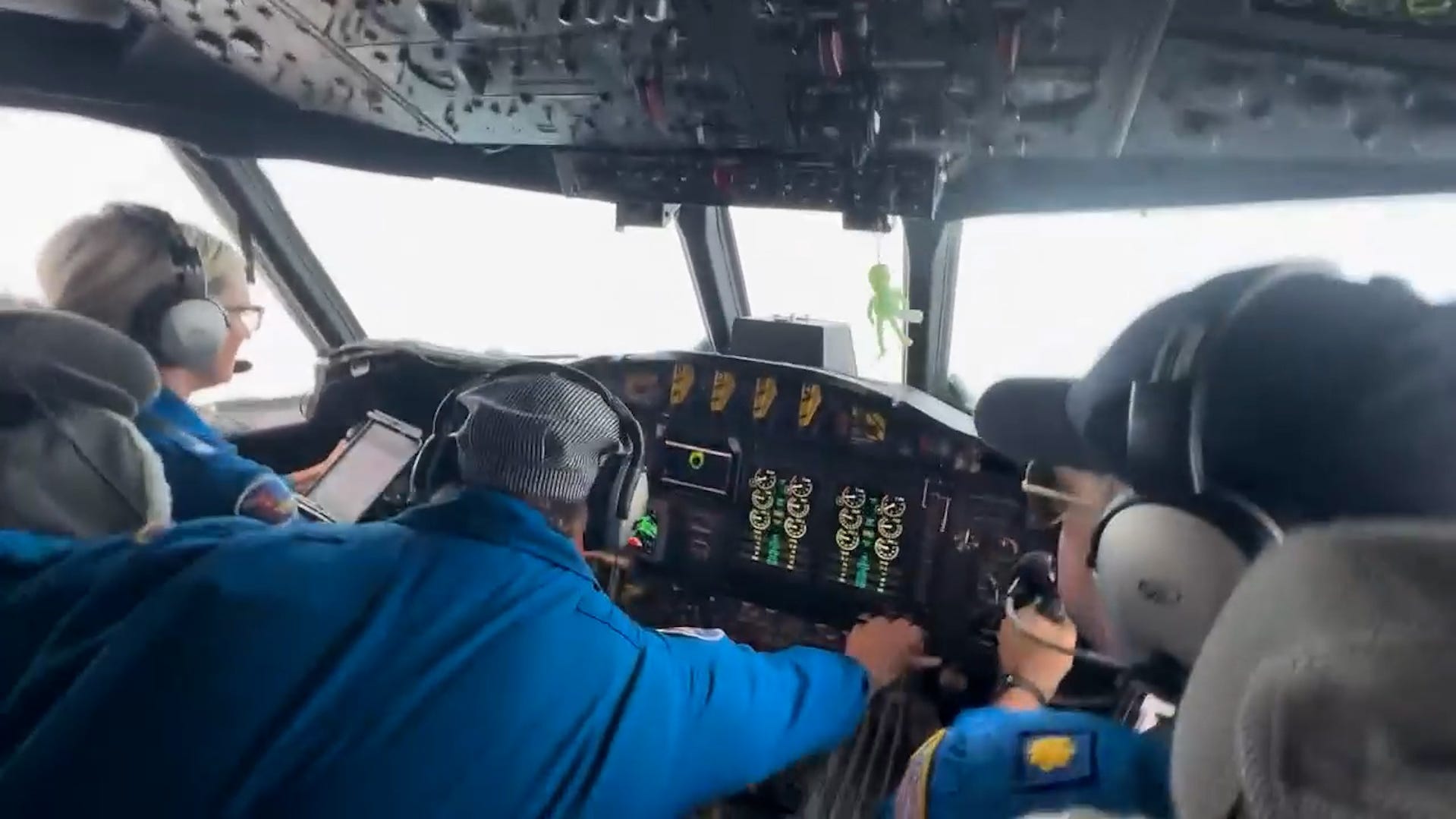Flight engineers, pilots, scientists and others flew multiple harrowing missions into Melissa without pay. They wanted to do far more.


Scientists working to learn why some tropical storms suddenly intensify to become devastating major hurricanes say it’s important to learn all they can about each one because opportunities to study them are so rare.
So when Melissa became one of the most powerful hurricanes on record during the federal government shutdown, the scientists were beyond frustrated because the extent of their research missions into the turbulent center of the storm were restricted in scope.
Federal flight engineers, pilots and scientists with the National Oceanic and Atmospheric Administration flew multiple harrowing missions into Melissa, along with their research partners, but the federal employees did so without pay. Their paychecks are on hold, but their work – providing crucial data for hurricane forecasting – is considered essential.
However, the crews were not allowed to fly extra flight paths through the hurricane or drop extra research instruments not considered necessary for forecasts.
So Melissa – with some of the most violent winds ever recorded in an Atlantic hurricane – became a critical missed opportunity to learn more about why it behaved differently than other storms, said James Franklin, a retired former branch chief for the hurricane specialists unit at the National Hurricane Center.
“The patterns that were flown in Melissa were very basic, the minimal kind of pattern they could do, as simple as possible with as small of a crew as possible,” Franklin said.
Agency veterans told USA TODAY the shutdown is the latest in what has been a tough year for NOAA employees, including those at the National Weather Service, National Hurricane Center, and the multiple laboratories within Oceanic and Atmospheric Research.
Shutdown sidelines hurricane research
Melissa was one of three Category 5 hurricanes this summer, the most extreme category on the Saffir-Simpson Hurricane Wind Scale. The hurricane has been blamed for 77 deaths, according to the Pan American Health Organization.
Melissa also is among 13 Category 5 hurricanes in the past decade, in what some scientists say appears to be an increase in intensity among the strongest storms and an increase in the number of storms that experience rapid intensification as the storms are fueled by warmer oceans.
Federal employees granted exceptions to fly hurricane reconnaissance missions during the shutdown were only allowed to collect basic data to learn what was happening inside the storm, said John Cortinas, a former deputy assistant administrator for science with NOAA's Oceanic and Atmospheric Research.
What wasn't being collected are other research observations that are part of every hurricane season, including experiments conducted by NOAA's Hurricane Research Division and its academic partners, who were able to pay their scientists who flew with NOAA during Melissa. “It’s absolutely critical to have these kinds of observations,” Cortinas said.
For example, earlier NOAA science missions in collaboration with academic researchers this summer, dropped small, expendable instruments to learn more about how conditions inside the core of the hurricane interact with the surrounding environment to make storms more or less intense. Those instruments stayed grounded during Melissa, while other instruments and drones collecting forecast information were deployed.
The reconnaissance missions during Melissa got “a lot of great data” said Andrew Hazelton, an associate scientist at the University of Miami, who flew on several of those missions.
